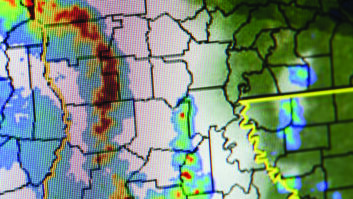Paul McLane is U.S. editor in chief.
In an earlier post I shared Al Peterson’s question about how EAS should be used in an earthquake.
I heard from Michi Eyre, the founder of REC Networks and director of J1 Radio, with this thoughtful reply, and wanted to share it.
“The American EAS system serves two purposes, as an early warning system and as a method of communications in the aftermath of an incident,” Eyre wrote.
“Warning of impending storms, tornadoes, hurricanes and other bad weather as well as giving evacuation orders as a result of a major wildfire are examples of an early warning system. Using EAS for AMBER alerts and giving evacuation orders as a result of an accident that has taken place are examples of using EAS in the aftermath of an incident.
“I do not feel that EAS can provide an efficient early warning of earthquakes,” she continued. “This is because the United States lacks the infrastructure to provide expedient early warnings of earthquakes such as the system currently being used in Japan. In the aftermath of an earthquake, a properly implemented EAS system could give early warning of tsunami. In Japan, tsunami warnings are normally issued 2 minutes after the earthquake takes place.
“REC Networks has had some experience with the Earthquake Early Warning (EEW) system that is used in Japan, a nation along the Pacific Ring of Fire and very prone to earthquakes. Japan’s weather agency has a very sophisticated network thousands of sensors across the nation. At the first indication of P-waves, a sensor will send preliminary information regarding magnitude and an epicenter to the network. With this information, the EEW network sends an activation which immediately interrupts the radio and television broadcasts in the areas predicted to feel the earthquake.
“The EEW network is also connected to the nation’s wireless phone network. Most cell phones in Japan will receive the warnings. There are also standalone EEW receivers and computer software that can receive the warnings. EEW alerts are also sent over Twitter. Using GPS, the EEW services using wireless phones, computer software and the standalone units can predict the time when the shock waves will actually reach the listener’s location. Some EEW applications I have seen even have a verbal countdown as the shock waves approach. REC’s Japanese pop music Internet radio station J1 Radio broadcasts the EEW messages. Not necessarily as an early warning but as a way of telling the world when something is taking place. Japan’s EEW system is also used in Chile.
“I lived in Los Angeles during the Northridge earthquake of 1994,” Eyre continued. “When the earthquake took place, many of the broadcast stations stopped their normal programming and voluntarily reverted to one of the news stations such as KNX or KFWB. I feel that in the aftermath of a major disaster, this is the best way to assure that a common message is being delivered.
“REC Networks has a video in English produced by the Japan Meteorological Agency demonstrating the EEW system as well as videos of the system being activated during the March 11, 2011 Great Tohoku earthquake in Japan as well as a major earthquake in Chile at our website.”












